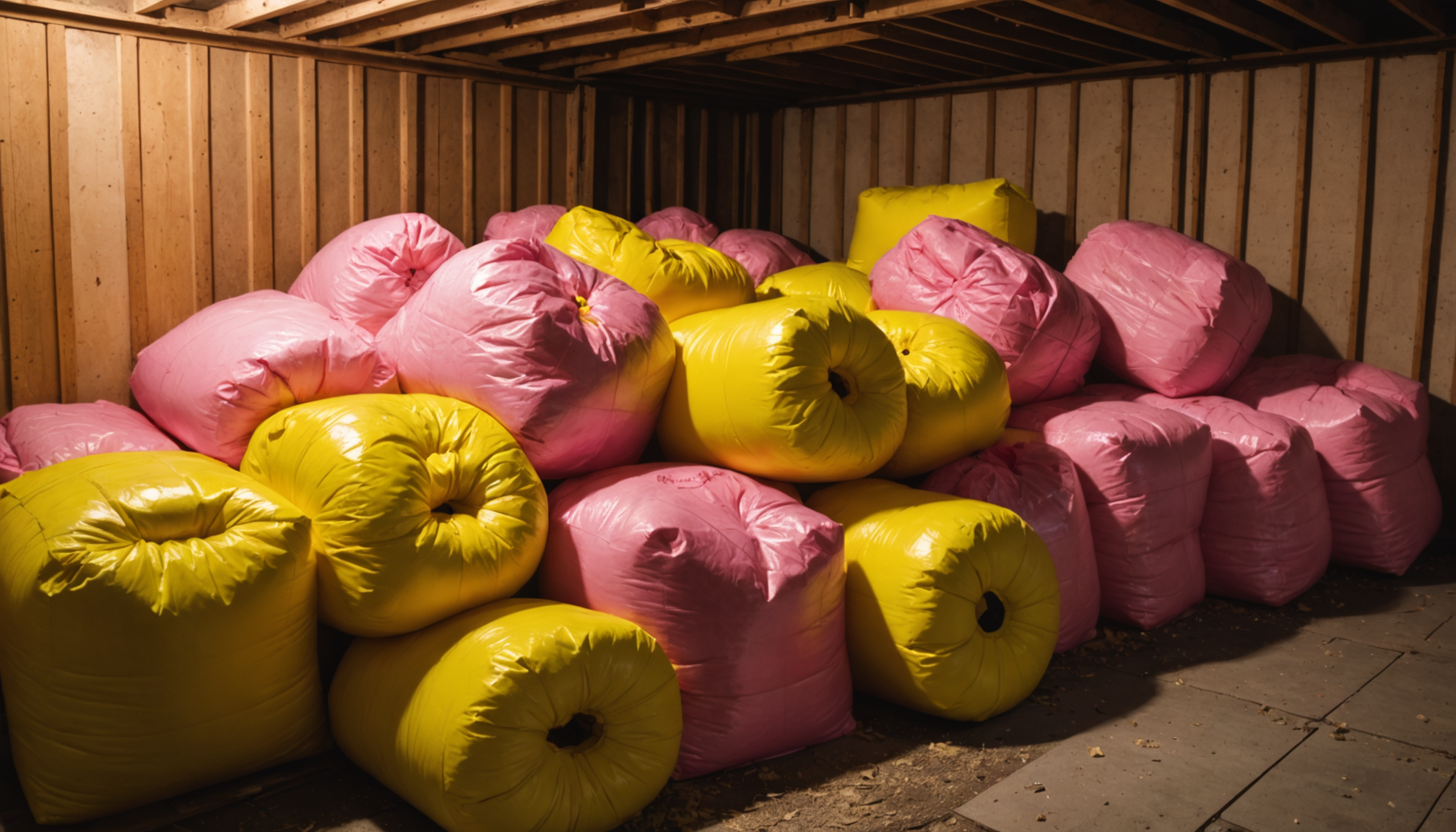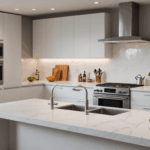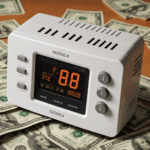One of the most common errors that homeowners make when insulating their property is selecting the wrong type of insulation. This can lead to undesirable consequences, such as decreased energy efficiency and increased utility bills. When faced with a multitude of options, from fiberglass and cellulose to spray foam and rigid foam, many find the decision overwhelming. Choosing the appropriate type of insulation is crucial, as each category presents unique properties that suit specific applications.
It’s imperative to understand the different types of insulation and their respective benefits and limitations. For instance, fiberglass insulation, known for its affordability and ease of installation, proves effective in many standard residential applications. However, it might not be the best option for areas prone to moisture or where high thermal resistance is desired. On the other hand, spray foam insulation, though more expensive, provides an excellent air seal and high R-value, which makes it suitable for attics, ceilings, and walls where optimal energy savings are required.
Below is a comparison of some common insulation types, showcasing the aspects that influence their suitability for various areas of a home:
| Insulation Type | R-Value | Cost | Applications | Pros | Cons |
| Fiberglass | 2.2–2.7 per inch | Low | Walls, Attics | Economical, Easy to Install | Can Lose R-Value If Compacted |
| Cellulose | 3.2–3.8 per inch | Moderate | Walls, Roofs | Good Fire Resistance, Eco-Friendly | Can Settle Over Time |
| Spray Foam | 6.0–7.0 per inch | High | Attics, Walls | Seals Air Leaks, High R-Value | Costly, Professional Installation Needed |
| Rigid Foam | 3.8–5.0 per inch | Moderate to High | Floors, Ceilings | High Moisture Resistance, Versatile | Not Easy to Fit Around Irregular Shapes |
Moreover, the choice should consider factors like the climate, the age and layout of the building, and any specific insulation objectives, such as noise reduction or enhancing structural integrity. In cooler climates, higher R-value insulation can substantially reduce heating costs, whereas in warmer regions, materials providing better moisture control might be more pertinent. Misjudging these circumstances when selecting insulation can lead to ineffective thermal performance and poor overall value.
Therefore, making an informed decision about insulation type is more than just selecting a product off the shelf. It involves a careful analysis of the unique demands of your home and the characteristics of the insulation materials available. When in doubt, consulting with a professional who can provide tailored advice is often a wise investment. By aligning the insulation type with the specific needs of your home, you can avoid costly mistakes and ensure that your investment yields optimal energy efficiency and comfort.
Ignoring air leaks and drafts

One significant concern when insulating a home is the oversight of air leaks and drafts, which undermines the effectiveness of any insulation efforts. Without addressing these issues, even the most well-insulated space can suffer from energy inefficiency, resulting in wasted money through increased heating and cooling costs. Proper attention to sealing air leaks can dramatically enhance insulation performance and ensure that your efforts yield the desired energy savings.
To tackle air leaks and drafts effectively, follow these systematic steps:
- Identify Air Leak Locations:
- Conduct a visual inspection around windows, doors, electrical outlets, and baseboards where air might infiltrate. Look for gaps, cracks, and areas where light and air may be entering or exiting.
- Use a smoke pencil or incense stick on a windy day to detect air movement. Watching the smoke closely will help highlight areas where drafts are present.
- Check less obvious locations, such as attic hatches, basement walls, and ductwork joints.
- Seal Gaps and Cracks:
- Use weatherstripping tape around doors and windows to close any visible gaps and improve airtightness. This is a cost-effective method and easily applied without professional assistance.
- Apply caulk to cracks in walls or around window frames. Silicone or latex caulk works well for sealing gaps up to a quarter-inch wide.
- For larger gaps, especially in places like attic floors or ceilings, expandable spray foam can be an effective choice due to its ability to fill irregular spaces completely.
- Insulate and Seal Ductwork:
- Inspect ductwork for holes and loose-fitting joints that could be leaking air. Use mastic sealing or metal tape to secure any loose connections and seal leaks effectively.
- Wrap ductwork with insulation to prevent energy loss, which is particularly crucial in unconditioned spaces like attics or crawl spaces.
- Enhance Window Efficiency:
- Install storm windows or thermal window panes to reduce air infiltration. Alternatively, add clear plastic film on window interiors during colder months to improve insulation without obscuring visibility.
- Consider upgrading to double or triple-glazed windows for enhanced insulation and reduced drafts if budget allows.
- Regular Maintenance and Checks:
- Perform seasonal checks to ensure that previous measures are still effective, as natural settling of the home can reopen leaks over time.
- Replace weatherstripping and recaulk as necessary, especially if you notice significant wear or if materials have become brittle or cracked.
Addressing air leaks and managing drafts is a continuous process that involves both initial sealing and regular maintenance. An airtight home doesn’t just result in lower energy bills; it also provides enhanced comfort, improved air quality, and greater control over indoor temperatures. By ensuring that these seemingly minor details are not overlooked, you can maximize the returns on your insulation investment and maintain a more energy-efficient home.
Insufficient insulation thickness
 When considering home insulation, it’s easy to underestimate the importance of insulation thickness and the value it provides in maintaining a comfortable and energy-efficient living environment. Opting for insufficient insulation thickness can be a costly oversight, leading to heat loss, increased energy consumption, and higher utility bills. Ensuring adequate thickness is a crucial aspect, as it directly correlates to the insulation’s R-value—the measure of thermal resistance—which determines how well the material prevents heat from escaping or entering your home.
When considering home insulation, it’s easy to underestimate the importance of insulation thickness and the value it provides in maintaining a comfortable and energy-efficient living environment. Opting for insufficient insulation thickness can be a costly oversight, leading to heat loss, increased energy consumption, and higher utility bills. Ensuring adequate thickness is a crucial aspect, as it directly correlates to the insulation’s R-value—the measure of thermal resistance—which determines how well the material prevents heat from escaping or entering your home.
The concept of R-value is central to understanding insulation performance. The higher the R-value, the more effective the insulation is at resisting the transfer of heat. If the insulation layer is too thin, even high-quality materials can’t perform optimally, resulting in subpar temperature regulation. This shortfall can mean the difference between a cozy, energy-efficient home and one that constantly battles temperature fluctuations and energy wastage. Failure to achieve the recommended thickness for your climate zone can significantly undermine the potential energy savings and comfort levels you’re pursuing with your insulation project.
Building codes often specify minimum thicknesses for insulation based on regional climate conditions. However, many homeowners exceed these standards to achieve better energy savings and improved comfort. For example, in colder regions, where heat retention is crucial during harsh winters, thicker insulation layers are essential. Conversely, in warmer climates, thicker insulation can reduce the load on air conditioning systems by preventing heat from penetrating the home. The cost savings realized from decreased energy consumption can justify, and often exceed, the initial investment in thicker insulation.
Furthermore, when insulation does not meet adequate thickness requirements, temperature discrepancies between rooms can develop, leading to discomfort and potential dampness due to condensation. Uneven temperatures can create cold or hot spots, which force heating or cooling systems to work overtime to achieve uniform temperatures across living spaces. This additional strain shortens the lifespan of HVAC systems, leading to further expenses. Therefore, ensuring sufficient thickness not only optimizes insulation performance but also prolongs the functionality of your heating and cooling equipment.
In many cases, increasing the thickness of your insulation can also enhance soundproofing qualities, offering an added benefit of a quieter indoor environment. This additional layer dampens sound transmission between rooms and from external noise sources, enhancing the tranquility and privacy of your home.
A crucial step in choosing the right thickness is consulting with a professional who can assess your home’s specific needs. Professionals can conduct evaluations, such as a thermal imaging scan, to determine current performance and identify areas requiring improvement. They can also guide you in selecting materials that provide the best R-value per inch, ensuring you make the most efficient use of space, especially in areas with limited clearance like attics and wall cavities. Engaging with experts ensures informed decisions, tailored to your home’s requirements and local climate conditions.
Ultimately, achieving the correct insulation thickness is a fundamental step in maximizing your home’s energy efficiency and comfort. By prioritizing this aspect of insulation, homeowners can avoid costly mistakes and enjoy the robust benefits of a well-insulated living space—namely, reduced energy expenses, enhanced comfort, and a healthier indoor environment.
Overlooking moisture barriers
 Moisture management is a critical aspect of effective home insulation that is all too frequently overlooked. Neglecting moisture barriers can have severe consequences, not only compromising the insulation’s performance but also leading to costly damage over time. Without proper moisture control, insulation materials can absorb moisture, which can significantly reduce their R-value and lead to mold growth, structural decay, and health hazards.
Moisture management is a critical aspect of effective home insulation that is all too frequently overlooked. Neglecting moisture barriers can have severe consequences, not only compromising the insulation’s performance but also leading to costly damage over time. Without proper moisture control, insulation materials can absorb moisture, which can significantly reduce their R-value and lead to mold growth, structural decay, and health hazards.
When installing insulation, it is essential to consider the potential for moisture intrusion from both external and internal sources. Rainwater, snow, and groundwater can all pose significant threats if not properly managed, but so can interior humidity from everyday activities like cooking and showering. Moisture barriers, also known as vapor barriers, are a vital line of defense in these scenarios; they prevent moisture from penetrating insulation materials and the building’s structural elements.
Typically constructed from plastic or specialty paint coatings, moisture barriers are designed to retard water vapor diffusion through building walls, floors, and ceilings. They are particularly crucial in areas with high humidity or significant rainfall, where the risk of moisture infiltration is highest. However, it is vital to ensure that these barriers are installed correctly within the building envelope to function effectively. Misplaced, incomplete, or damaged barriers can negate the intended benefits, allowing moisture to seep in despite your best efforts.
Installing the right type of moisture barrier is contingent upon climate considerations and the specific parts of your home that are prone to dampness. In cold climates, they are typically installed on the inside surface of a wall insulation to prevent moist indoor air from reaching the colder exterior walls, where condensation and freezing can occur. Meanwhile, in hot and humid areas, placing the barrier on the outer side may be more beneficial to keep external moisture from penetrating into the cooler, air-conditioned interiors.
Inadequate moisture management can also lead to the deterioration of other building materials. Mold and mildew can thrive in damp conditions, which not only pose health risks through spores but can also damage wallboards, flooring, and ceiling components. The rot and structural impairment caused by moisture intrusion can lead to exceedingly expensive repairs and degrade the value of the home.
Furthermore, moisture that is not adequately controlled can lead to inefficiencies in heating and cooling systems. Damp materials tend to transmit heat faster than dry ones, diminishing the effectiveness of insulation and driving up energy costs as HVAC systems work harder to maintain desired indoor temperatures. Thus, implementing effective moisture barriers offers dual benefits by protecting the structural integrity of your home and maintaining its energy efficiency.
Ensuring that moisture barriers are used and correctly installed is a step that may warrant professional consultation. You want to be certain that barriers complement the insulation strategy and account for any peculiarities your home’s design might present. An expert can assess the typical moisture issues faced by your particular environment and guide you in selecting the most appropriate barrier materials and installation techniques for optimal protection.
In sum, overlooking moisture barriers is a mistake that can undermine the effectiveness of your insulation efforts and expose your home to unnecessary risks. Remember to integrate moisture management into your overall insulation plan to secure safe, energy-efficient, and durable home insulation. Proper attention to this often-overlooked detail can yield substantial long-term savings by protecting both your investment in insulation and the broader health of the building structure itself.
Skipping professional installation guidance
 The execution of a sound insulation plan often necessitates the insight and experience of professionals, which can be a crucial step that some homeowners might skip. Relying solely on DIY methods without understanding the intricacies of insulation installation can lead to several costly errors. Professionals, equipped with the right tools and expertise, can ensure that the insulation materials are applied correctly, meeting all safety standards and building regulations.
The execution of a sound insulation plan often necessitates the insight and experience of professionals, which can be a crucial step that some homeowners might skip. Relying solely on DIY methods without understanding the intricacies of insulation installation can lead to several costly errors. Professionals, equipped with the right tools and expertise, can ensure that the insulation materials are applied correctly, meeting all safety standards and building regulations.
One common pitfall without expert guidance is the incorrect installation of insulation materials, which can lead to gaps, compressions, or misalignment that severely reduce the insulation’s effectiveness. These imperfections result in thermal bridges where heat can bypass the insulation, leading to increased energy usage. Moreover, improper handling may damage materials, particularly with sensitive options like spray foam, compromising their performance and lifespan.
Additionally, professional installers are adept at identifying and addressing ancillary considerations such as ventilation and moisture control, which are critical to the long-term performance of insulation. They can integrate these elements seamlessly into the insulation strategy, preventing potential issues from arising and ensuring optimal indoor air quality and comfort. Without professional intervention, homeowners might overlook these nuanced requirements, leading to problems such as mold growth or moisture logged materials.
Cost considerations often mislead homeowners into shunning professional services, viewed as an unnecessary expense. However, this oversight might lead to not just inefficiency in heating and cooling costs but also potential remediation expenses down the line for problems like mold rectification or structural repairs. Thus, the upfront investment in professional services could very well offset more considerable long-term costs associated with faulty installations.
Furthermore, professionals bring valuable insights into the right type and thickness of insulation based on the specific needs of your home and local conditions, ensuring compliance with building codes. They have access to specialized equipment such as thermal imaging cameras, which can uncover hidden areas of energy loss that might not be apparent during a typical inspection.
Ultimately, choosing to consult with or employ professionals for your insulation project is a strategic decision that ensures the job is done right the first time. While it might be tempting to save money by going it alone, the potential pitfalls make expert guidance not just a recommendation but an essential component of a successful insulation endeavor.
In conclusion, effective insulation is a multi-faceted process that can significantly impact your home’s energy efficiency and comfort. By making informed choices about the type and thickness of insulation, addressing air leaks, incorporating moisture barriers, and seeking professional guidance, you can avoid costly mistakes and ensure your insulation serves its intended purpose. Investing time and resources into proper insulation will not only save money on energy bills but also contribute to a sustainable and comfortable living environment.

